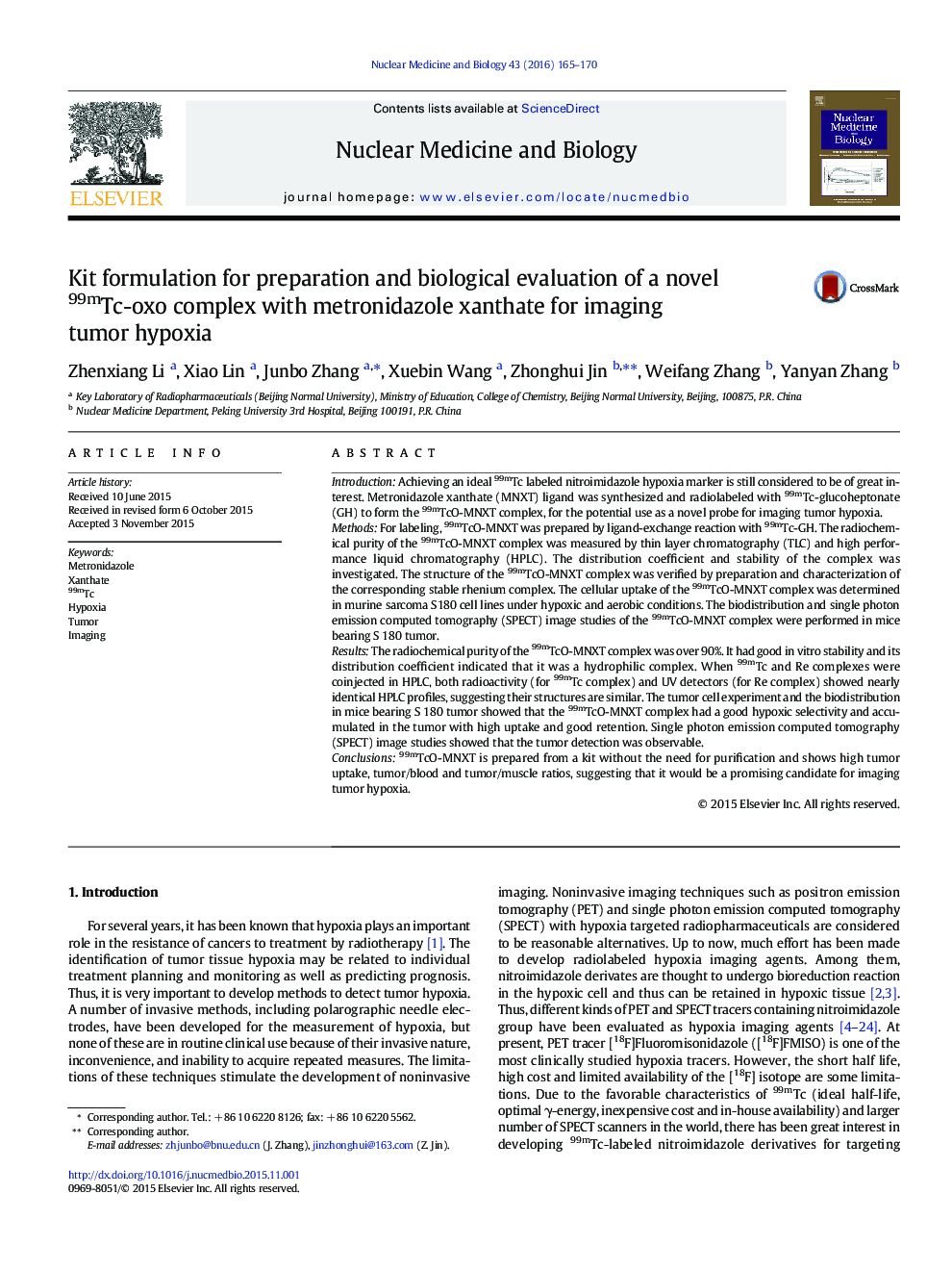| Article ID | Journal | Published Year | Pages | File Type |
|---|---|---|---|---|
| 2153395 | Nuclear Medicine and Biology | 2016 | 6 Pages |
IntroductionAchieving an ideal 99mTc labeled nitroimidazole hypoxia marker is still considered to be of great interest. Metronidazole xanthate (MNXT) ligand was synthesized and radiolabeled with 99mTc-glucoheptonate (GH) to form the 99mTcO-MNXT complex, for the potential use as a novel probe for imaging tumor hypoxia.MethodsFor labeling, 99mTcO-MNXT was prepared by ligand-exchange reaction with 99mTc-GH. The radiochemical purity of the 99mTcO-MNXT complex was measured by thin layer chromatography (TLC) and high performance liquid chromatography (HPLC). The distribution coefficient and stability of the complex was investigated. The structure of the 99mTcO-MNXT complex was verified by preparation and characterization of the corresponding stable rhenium complex. The cellular uptake of the 99mTcO-MNXT complex was determined in murine sarcoma S180 cell lines under hypoxic and aerobic conditions. The biodistribution and single photon emission computed tomography (SPECT) image studies of the 99mTcO-MNXT complex were performed in mice bearing S 180 tumor.ResultsThe radiochemical purity of the 99mTcO-MNXT complex was over 90%. It had good in vitro stability and its distribution coefficient indicated that it was a hydrophilic complex. When 99mTc and Re complexes were coinjected in HPLC, both radioactivity (for 99mTc complex) and UV detectors (for Re complex) showed nearly identical HPLC profiles, suggesting their structures are similar. The tumor cell experiment and the biodistribution in mice bearing S 180 tumor showed that the 99mTcO-MNXT complex had a good hypoxic selectivity and accumulated in the tumor with high uptake and good retention. Single photon emission computed tomography (SPECT) image studies showed that the tumor detection was observable.Conclusions99mTcO-MNXT is prepared from a kit without the need for purification and shows high tumor uptake, tumor/blood and tumor/muscle ratios, suggesting that it would be a promising candidate for imaging tumor hypoxia.
